A composting toilet turns human waste into compost. It does this without using a lot of water. This kind of toilet has parts that let air in to help break down the waste fast with the help of microbes. So, how does a composting toilet work? It relies on air flow and microorganisms to break down waste, turning it into compost over time.
The process it uses is called aerobic decomposition. This means it needs oxygen to work right and make the waste less smelly. How does a composting toilet work to maintain low odors? By using aeration and the right balance of materials, it keeps smells at bay.
In these toilets, the solid and liquid waste are separated effectively. The solids eventually turn into compost while the liquids either evaporate or get absorbed with the help of vents and fans that also help in reducing odors! They are ideal, for locations without sewer systems such, as cabins or friendly houses. Would you happen to know how does a composting toilet work to manage waste? It allows it to evaporate or be absorbed while leaving behind waste to decompose into compost.

Introduction to Composting Toilets
What Is a Composting Toilet?
Composting toilets are toilets that convert waste into compost without the need, for water by using a process known as decomposition. So, how does a composting toilet work to achieve this? They achieve this by mixing the waste with a bulking agent like sawdust and allowing microbes to break it down in an environment rich, in oxygen.
This method includes using air and tiny organisms to change garbage into a substance that helps plants grow efficiently. The toilets separate solid waste to reduce smells and speed up decay. If you're interested, in how does a composting toilet work, it involves mixing waste with sawdust or other substances, in carbon and allowing microbes to break it down slowly over time.
Compost toilets are environmentally friendly as they help conserve water and decrease pollution from sewage systems. They are an option, for locations lacking water or sewer services. People use them in homes, cabins, parks, and during outdoor events.
Composting toilets are an option, for those seeking to embrace a lifestyle. Wonder how does a composting toilet work in remote areas in locations where standard plumbing and sewage systems are not an option? These toilets provide an effective waste management solution.
History and Evolution of Composting Toilets
People have forever grappled with the disposal of waste. Ages ago, the discovery was made that human waste could serve as fertilizer. This concept gave birth to the initial composting toilets. These facilities transform human refuse into something beneficial for the planet.
Back in the 1930s, enhanced models improved composting toilets. They included elements to lessen odor and accelerate decomposition. Currently, these toilets are a globally accepted eco-conscious choice.
They aid areas lacking water or sewage infrastructure. Converting waste into a usable resource is a move in the direction of sustainability.
Key Components of a Composting Toilet
When it comes to how does a composting toilet work? A composting toilet turns human waste into compost with a few key parts. It uses no water and mixes waste with materials like sawdust or peat moss. This mix helps break down the waste faster and cuts down on smells. How does a composting toilet work to speed up decomposition? The airflow helps increase the breakdown of waste by providing the necessary oxygen for the microorganisms.
There's also a vent system to let air in and out, which keeps it odor-free. Another important part is the container where the waste breaks down into compost. How does a composting toilet work to maintain airflow? The vents ensure that air circulates through the unit, aiding in the breakdown of waste.
Some models separate liquid from solid waste to speed up the process and reduce smell even more. After some time, you end up with nutrient-rich compost that can help plants grow better.

Types of Composting Toilets
Self-contained Composting Toilets
Self-contained composting toilets are a type of toilet that turns waste into compost inside the unit. They do not need water to work. This makes them great for places without plumbing or where saving water is important.
Everything happens in one unit that can fit inside a bathroom. Air flow and microorganisms break down the waste. The process reduces smell and turns waste into useful soil. But how does a composting toilet work in a self-contained unit? It combines the waste with a bulking material, uses air flow to promote decomposition, and ensures that the final product is safe to handle.
Centralized Composting Systems
Centralized compost systems are facilities designed to manage waste, from toilets. They are commonly located in areas such, as parks or large structures. They require space and rely upon a network of interconnected pipes connecting each toilet to the system.
Tiny living beings decompose the waste to create compost with the assistance of airflow and occasional warmth.
This system is effective, for handling waste from several individuals and is particularly beneficial in regions lacking consistent sewer facilities or facing water scarcity issues. The resulting compost serves as an aid for plant growth without the need, for fertilizers.
Waterless and Water-saving Models
Transitioning away, from systems to waterless and water models presents a savvy option for consumers to consider. The toilets in question forgo the use of water, in waste management. Opt for composting techniques instead.
This involves converting waste into compost that can be used without the use of flushing toilets, which is particularly beneficial, in areas with limited water access or where conservating water is important. How does a composting toilet work in these scenarios? It utilizes compost techniques to break down waste without the need, for water.
These eco-friendly toilets help reduce the water consumption of typical toilets used in households today. For instance traditional flush toilets can consume 1. 6 Gallons, per flush. However, waterless models eliminate this water usage making them perfect for regions with water supply and individuals looking to conserve water and protect the environment. So how does a composting toilet work in these waterless models? It operates by utilizing decomposition, with the assistance of airflow and microorganisms.
Advantages of Composting Toilets
Environmental Benefits
Moving onto the good stuff, composting toilets are great for our planet. They don't use water. This saves a lot of water each year. Think about it - every flush uses gallons of water. With a composting toilet, that's all saved.
These toilets are designed to transform waste into compost which benefits plant growth by returning nutrients to the earth in a cycle system. Wondering how does a composting toilet work to create compost? By utilizing the decomposition of matter with the assistance of microorganisms and proper ventilation. This process results in the creation of valuable compost material.
Composting toilets offer a benefit by conserving water and enhancing soil fertility naturally without the need, for chemicals.
Cost Savings
Switching to a compost toilet can help you save money in ways like cutting down on water bills since these toilets use little water or none at all! Just imagine the savings, from reduced sewage or septic tank upkeep costs.
Over time and with the use of composting toilets, you'll notice cost savings that can make them a wise option, for those seeking to reduce their expenses over the long term.
Off-grid living
Off-grid living involves utilizing systems that operate independently of utilities, such as composting toilets, which efficiently convert waste into compost without relying on water or electricity. These makes them a perfect fit, for those residing in areas devoid of city amenities.
These toilets support individuals living in areas and help decrease the requirement, for septic tanks while lowering water expenses as well. Ever wonder how does a composting toilet work in off-grid living? It is crafted to operate of public utilities system which makes it a perfect fit for regions, with resources.
Why Choose Smart Toilets Instead of Composting Toilets for Your Bathroom
Rising Awareness for Sustainability in Bathroom Solutions
People are changing their views regarding bathrooms. Because they learn more, about choices and now prefer smart water-saving toilets, with advanced features.
Opt for options to support the health of our planet. Eco-friendly toilets use less water and help to save energy while minimizing waste in the environment.
Intelligent toilets enhance sustainability in bathrooms too. They are equipped with components that increase their cleanliness and efficiency without excessive water usage. But, how does a composting toilet work compared to these smart options? While smart toilets save water, composting toilets go a step further by eliminating water use entirely.
The Shift Toward Smart and Eco-Friendly Bathrooms
People want bathrooms that are smart and good for the earth. They look for toilets that save water and use technology to be clean without hurting nature. Smart eco-friendly toilets can check health, save water, and even turn waste into something useful. This move to smarter bathrooms is because people know it's better for our planet.
These new toilets help everyone by using less water and making less trash. They come with features like automatic cleaning, which means they need fewer chemicals to stay clean. Plus, they fit well in any home looking to cut down on waste and energy use.
Everyone wins with this switch - families save money and we all do our part for a healthier earth.
Eco-Friendly Toilets with Smart Feature
Eco-friendly toilets with smart features save water and energy. They use technology to lower the amount of water per flush. Some can even analyze waste for health data. These toilets are good for the planet and helpful in homes.
They come with options like bidet washing, air drying, and odor removal. This makes going to the bathroom better for everyone. Smart toilets fit well in modern, eco-conscious bathrooms.
HOROW’s Innovative Smart Toilets
While HOROW doesn't provide composting toilets in their product offerings, their smart toilets are designed to cater to individuals seeking a sustainable and efficient option. If you're curious, about how does a composting toilet work? It's essential to grasp that these systems prioritize waste decomposition without the need for water usage. Even though HOROW's toilets don't engage in composting activities, they contribute significantly to water conservation through their flush and water saving functionalities. Thus they present a more eco-friendly option, for your bathroom needs.
Moreover, HOROW intelligent toilets enhance cleanliness and user convenience through functionalities such, as self cleaning bidets and sleek ceramic finishes. Unlike composting toilets that prioritize waste management, HOROW items present an eco bathroom option by minimizing water usage and supporting hygiene to guarantee both comfort and environmental advantages.
T05

HOROW T05 model may not operate similarly, to a composting toilet. It provides distinct environmental advantages that attract individuals concerned about sustainability issues. If you're curious, about how does a composting toilet work, it operates as a waste management system that does not require water and instead depends on natural decomposition techniques. Although not identical, the T05 contributes to water conservation through its mechanism resulting in cutting down on water usage significantly compared to conventional toilets.
The smart bidet functions and warm seat of the T05 offer improved comfort and cleanliness for users. With its blend of technology and contemporary styling, the T05 stands out from other models by delivering a sustainable and cozy bathroom experience.
T38

The HOROW T38 doesn't function like a composting toilet. Instead, it provides an eco option through its water saving capabilities. If you're wondering about how does a composting toilet work, it doesn't rely on water. Utilizes composting to decompose waste materials. In contrast, to this method, the T38 employs flushing mechanisms and a flush system to reduce water usage significantly making it a sustainable choice, for environmentally conscious individuals.
Moreover the T38 offers bidet functions and a cozy heated seat that enhances the user experience. The balance of water consumption and improved comfort sets the T38 apart as an environmentally friendly choice that provides an option, for composting toilets, with reduced environmental effects.
T37

The HOROW T37 functions differently, from a composting toilet but still provides eco advantages. If you're wondering about how does a composting toilet work, it's a mechanism that breaks down waste without needing water. In contrast, to composting toilets, the T37 employs a system to conserve water and presents an environmentally conscious option that lowers water usage while maintaining efficiency.
Moreover, the T37 comes with a bidet seat and self-cleaning functions that boost cleanliness and convenience. The inclusion of these elements, along with its water saving efficiency distinguishes the T37 from other models making it a sustainable and exceptionally comfortable choice, for users.
T30

The HOROW T30 might not work like a composting toilet. However, it offers eco advantages, for individuals interested in sustainable features. Additionally, the T30 model includes a bidet and an efficient flushing system to conserve water and reduce its impact, on the environment.
Moreover, the thoughtful design of the T30 promotes maintenance and a delightful user experience making it a smart and environmentally friendly option, with water-saving features and the added convenience of a bidet when compared to toilets.
FAQ
1. What is a composting toilet?
A composting toilet is a type of toilet that uses natural processes to break down waste into compost. It doesn't need water or plumbing - pretty neat, huh?
2. How does a composting toilet work?
Well, when you use the toilet, your waste goes into a chamber in the unit. Here, it gets mixed with peat moss or sawdust which starts the composting process.
3. Is there any odor from a composting toilet?
No. When these toilets are well kept and taken care of correctly, they don't have an odor because they separate liquid and solid waste.
4. Are there benefits to using this kind of toilet?
Yes. Composting toilets are great for the environment because they help conserve water and produce soil that is perfect for gardening. It's like a way of giving back to nature.

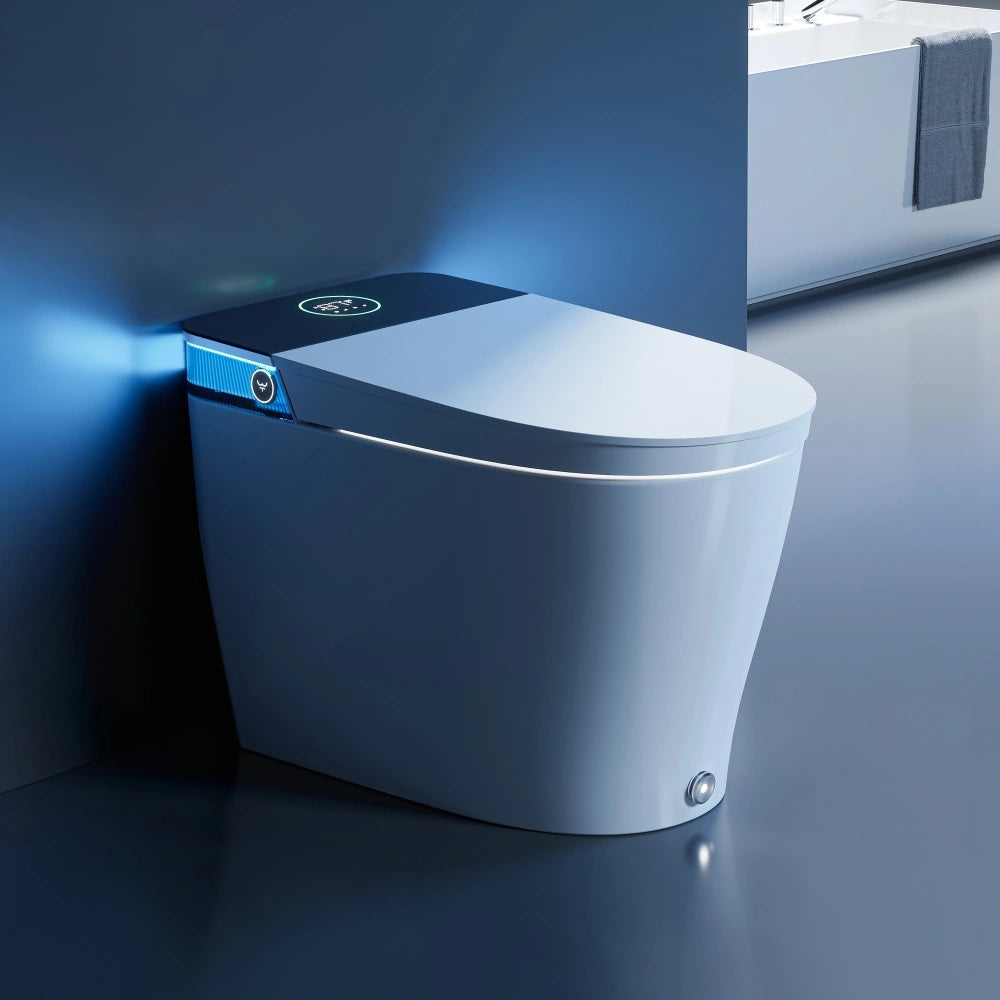
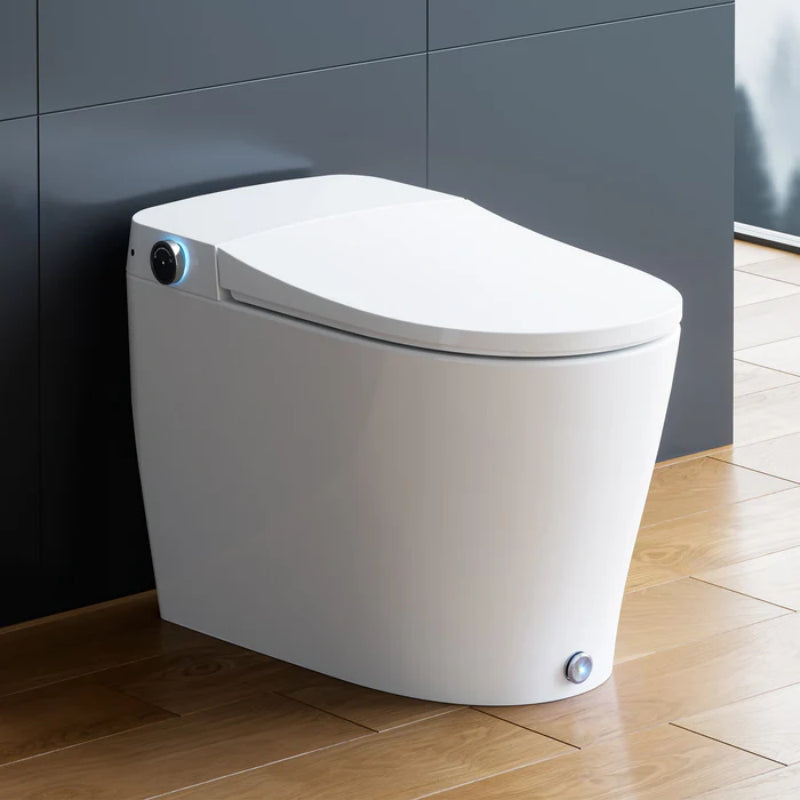
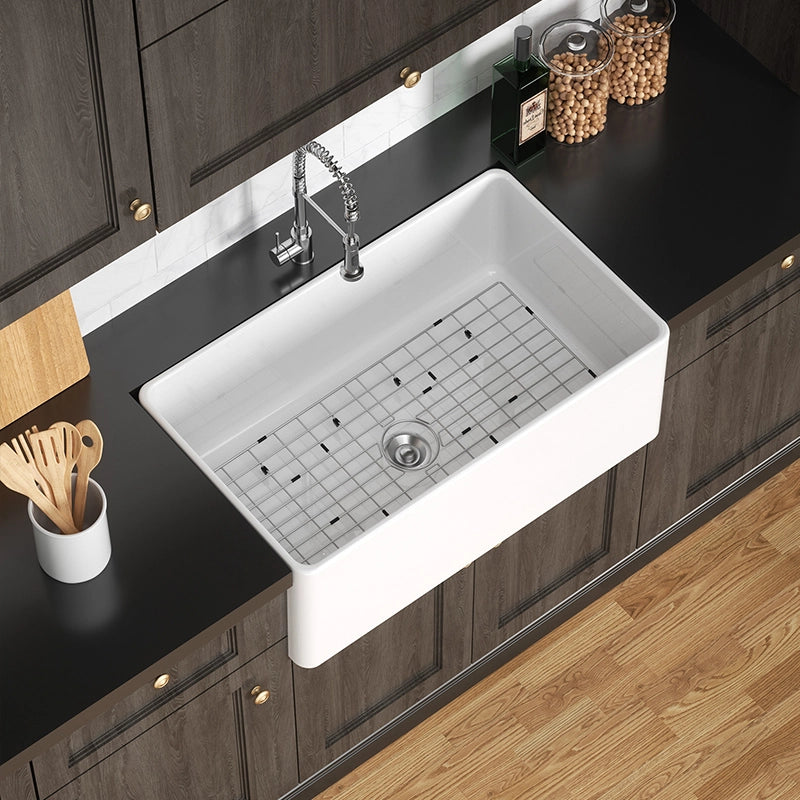
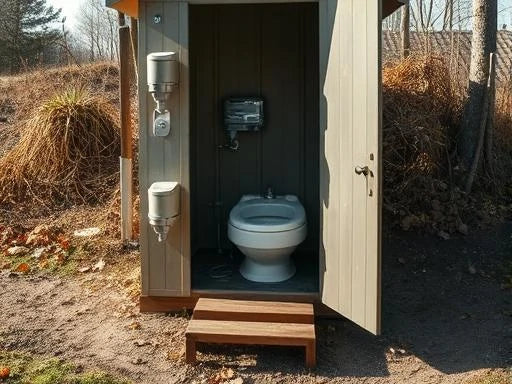
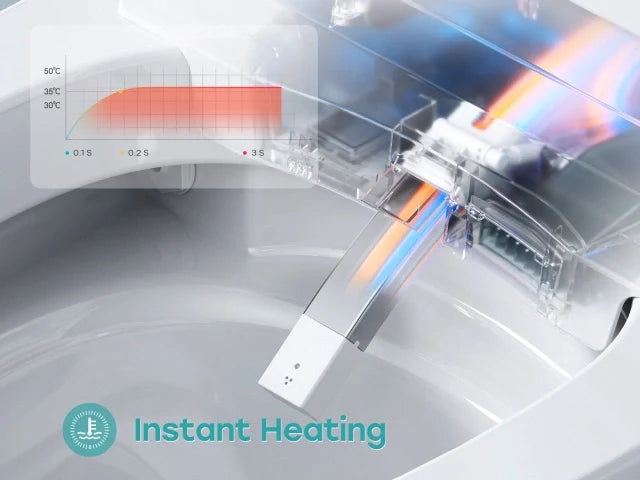
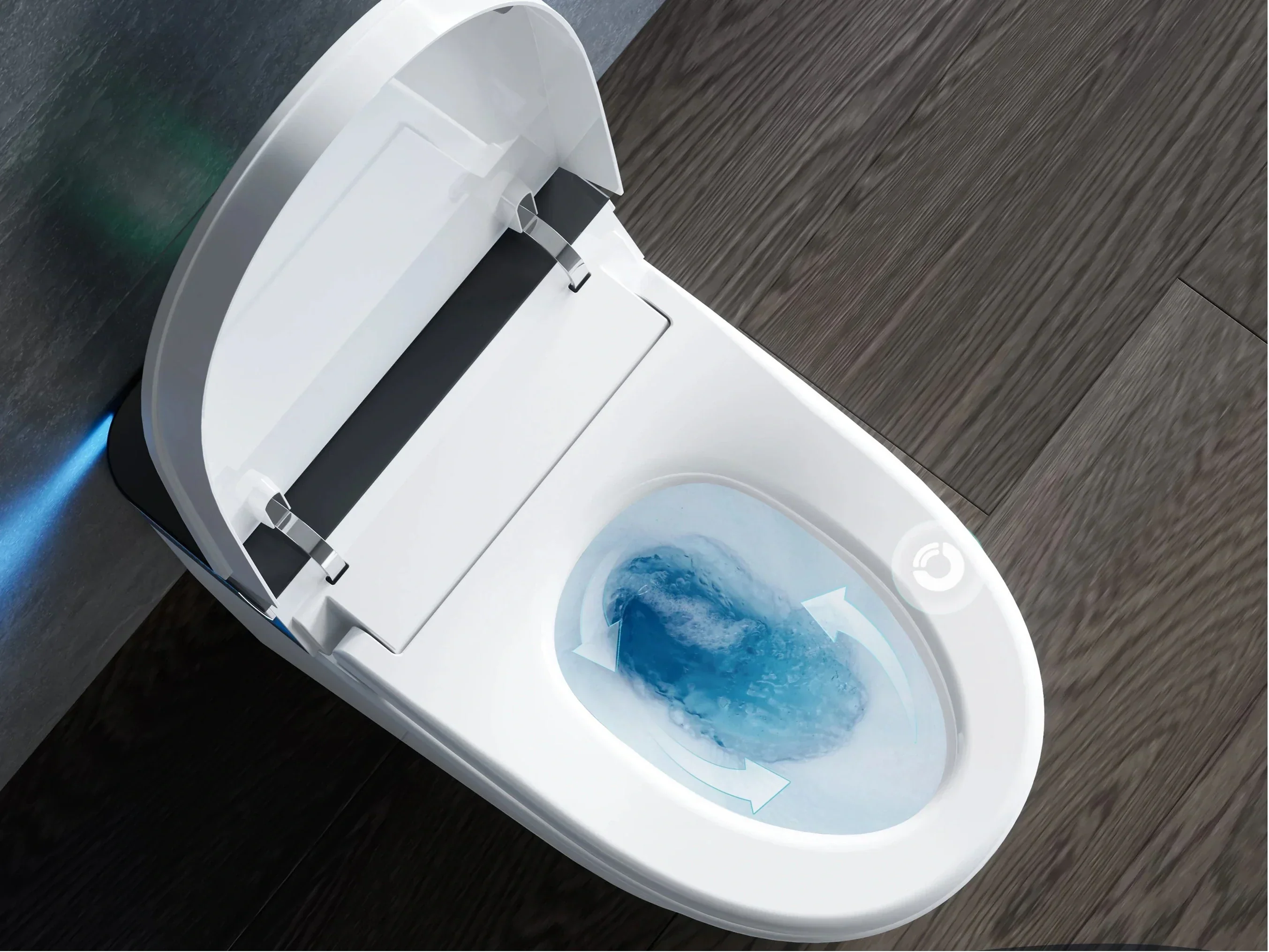

Leave a comment
This site is protected by hCaptcha and the hCaptcha Privacy Policy and Terms of Service apply.